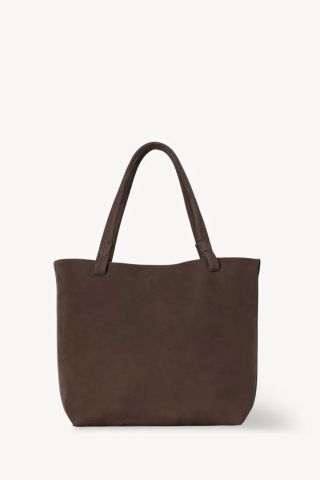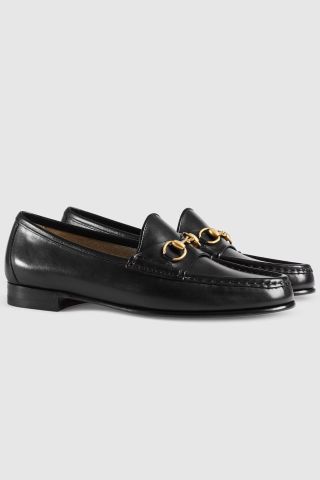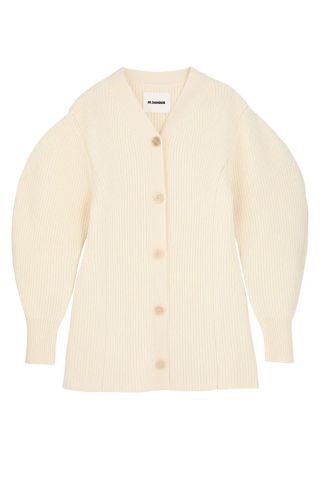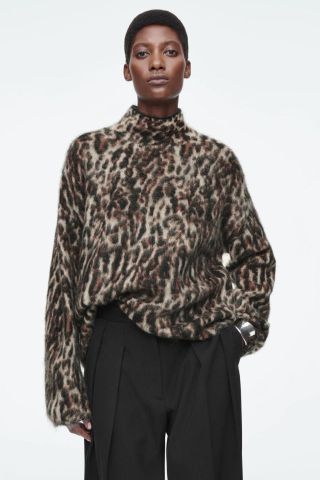In recent months, the discourse around the flattening of fashion and culture has only been getting louder. Some consumers are being left uninspired by designer collections that are only minutely differentiated from one season to the next (whilst others appreciate the consistency), and in many instances, big brands are simply copying the successes of other big brands, creating a loop where the same trend or item is available across the board.
Our obsession with quiet luxury has, in effect, returned us to the days of school uniform, but are we starting to crave something different, or are we happy to continue performing a reliable and repeatable paint-by-numbers dressing ritual?
After a summer of waistcoats, capri pants and drop-waist tank dresses (those were courtesy of Amy Lynn), it’s obvious that we do like to follow trends, even the micro ones. If the recent spring/summer 2025 runway shows were anything to go by, we may well start to see a shift away from “stealth wealth” and a move towards romance and modern maximalism—at least for those who fancy exploring new territory. Thanks to the return of Alessandro Michele’s more-is-more aesthetic at Valentino and Chemena Kamali resurrecting boho chic from the early 00s at Chloé, we can expect polka dots, ruffles on ruffles and lots of billowing maxi dresses next summer.
Sure, being fed what to wear and how to wear it 24/7 takes the guesswork out of dressing well, but is anyone still seeking ways to stand out from the crowd with fashion choices? I want to explore whether we now desire something different, and how we can discover new designers, brands and fashion identities outside of the algorithm.
Are We All Just Sheep Being Herded from Trend to Trend?
Whether you grew up with teen magazines, glossy fashion catalogues, the rise of luxury e-commerce or the explosion of social media, we have always been shown what to wear by way of seasonal trends. For example, every autumn a new winter coat must be bought. Over the years, this has encompassed puffer coats (thanks to Demna at Balenciaga elevating them to luxury status), snuggly fur coats (taking inspiration from Max Mara’s classic Teddy Bear Icon Coat) and that staple of the everyday wardrobe—the quilted jacket. All of the aforementioned are still relevant options today, but whether subconsciously or consciously, it is highly normal to follow a crowd when it comes to what’s trending.
Quiet luxury looks are still hugely popular with fashion insiders and continue to take up space on the runways for the coming seasons.
(Image credit: Launchmetrics; Bottega Veneta; By Malene Birger; Tod’s, Toteme, Elie Saab; Michael Kors)
There was a time when calling yourself a Topshop/River Island/Oasis/Morgan or Miss Selfridge girl meant you belonged to a distinctive style tribe, because design teams at these high-street brands had to rely on “analogue” research and inspirational trips aboard to help them build their collections. This was before runway shows became instantly accessible through our screens (previously, they were closed-door affairs attended by editors, buyers and in the case of couture, customers) and globalisation began its rapid spread, foreshadowing the opening of a Zara store on every high-street corner.
This acceleration also inspired forward-thinking luxury brands such as Burberry and digital platforms including YouTube to bring runway shows to the masses in real time (the British heritage brand was the first to livestream a runway show in 2010). For better or worse this has made the shopping process frictionless for the customer. It has also resulted in every brand featuring exactly the same on-trend items (puffball skirts, clogs, barn jackets) at the same time, with the only difference being the price point or tweaks in fabric or minor detailing. So, even if you were to now call yourself a Topshop girl, it would also make you a River Island, Zara and H&M girl.
The shuttering of highly influential independent and contemporary brands like The Vampires Wife, Mara Hoffmann and Nicholas Kirkwood coupled with the fact that upcoming designers have repeatedly reported having their designs copied by ultra-fast fashion brands, has left little room for new ideas and an obsession with nostalgia becoming the default. Miniskirts are everywhere, punk is mainstream and the concept of streetwear has become saturated. Without significant counter-cultural movements or sub-cultures driving change in society at large, fashion has found itself without the necessary impactful moments, movements and rebellions to reflect. This raises the question of how this era will be remembered—in fashion terms—by future generations.
Is Quiet Luxury Quietening Down?
There have been whispers by industry insiders that the concept of quiet luxury may be coming to an end. Similar to the backlash against the “Ikea-fication” of our homes in the ’90s which called for us all to “chuck out that chintz!” (honestly, that was the actual tagline for one of Ikea’s TV ads) and bring in the uniformity of Billy Bookcases and paper lampshades, we may be headed back towards a period of maximalism.
Call it quiet-luxury, “stealth-wealth” or “old-money” style—at a time of economic uncertainty, purchasing a £6000 cashmere coat or a £1000 wool cardigan simply isn’t an option for most. And whilst these pieces will live on in wardrobes for years to come, with the majority only able to purchase a sub-par version, the quiet-luxury lifestyle—in its purest form—can only really be achieved by the 1%.
To truly buy into quiet luxury requires bringing home the kind of salary earned only by those encountered on shows like Succession, a series which played a significant part in the trend coming to prominence in the first place. Without being fully intentional about what we are purchasing (part of the underlying motivation to buy better), there is a collective feeling that quiet luxury could simply be a passing trend. And because of its focus on basics, neutrals and clean lines, for some, it has felt more like a uniform than a styling choice. For others, it has been a liberation, allowing them to get ready quickly and still feel pulled together, with less pressure of adding flair or personality to a look.

Elegant, muted looks continue to dominate our feeds, providing many with the inspiration to pare things back and make sensible investment purchases.
As we enter the festive season, there will be a natural desire to have fun with fashion again—similar to the joyful dressing we saw post-pandemic. In times that seem volatile, we want what we buy to spark something within us, so could this signal the last season that quiet luxury gets to dominate our feeds? Let’s also not forget that come spring 2025, we will all be focused on romance courtesy of Chloé and Zimmermann, soft power à la Louis Vuitton and a celebration of daytime decadence thanks to Valentino.
Being Brave and Going It Alone
There is already a personal style revolution of sorts happening online. This isn’t necessarily anti-trend, but it’s a move towards picking the parts that suit our lifestyles and personalities. Content creators are even gatekeeping or choosing not to disclose where their most directional pieces were acquired, lest stock becomes sold out by TikTok fans (see vintage jewellery warehouse Accessories of Old for an example of a little-known secret going unexpectedly viral on the app). We might not realise it now, but this shift may be beneficial in the long term as it becomes harder to keep up with daily microtrends, not to mention the expense of adding a new outfit to our wardrobes every week.
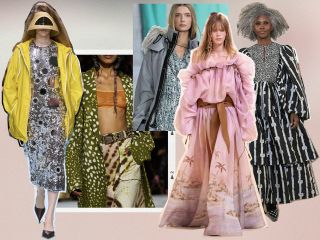
Some more daring runways are influencing the wider fashion landscape, with Prada (yellow anorak look) even taking the inspiration of go anti-algorithm for SS25.
(Image credit: Launchmetrics; Prada; Van Noten; Zimmermann; Batsheva; Burberry)
By feeling the fear and doing it anyway (i.e. having the confidence to take a pause when the latest “must-have” outfit addition pops up on our feeds), and asking ourselves “Does this really fit me and my lifestyle?”, we can break out of the cycle of sameness and even become someone our friends turn to for style advice.
Who to Know Outside of the Algorithm, and Where to Find Them
We all know the algorithm is a powerful tool to fight against. Just entering an uncomplicated search for “kitten-heel boots” will return results from at least a dozen fast-fashion sites, several high-street chains and a few luxury e-commerce retailers. It will take clicking through to page nine or 10 to find smaller brands such as Vince, Jo Mercer or Coperni to inspire the purchase of a pair of boots you won’t see on fellow commuters all season long.
There are ways to beat the algorithm, so here are my top five tips and insider brands to know.

Unique styling, indie brands and combinations of new and old items are supporting a wave of more adventurous influencers into the spotlight.
- Switch to an incognito window when you’re next searching for, say, “Tailored Bermuda shorts” to discover under-the-radar brands. My attempt came up with Seventh, Peter Do and Sportmax—much cooler.
- As workwear becomes more relaxed to suit our hybrid-working lifestyles, consider offerings from The Garment Copenhagen and Renggli to update classic tailoring.
- Seek out the new names at the big four fashion weeks (New York, London, Milan, and Paris) to discover emerging talent yet to go viral— designers like Grace Ling, S.S. Daley and Chet Lo. Don’t dismiss the smaller fashion weeks of cities such as Copenhagen for brands like Lovechild 1979 and Mark Kenly Domino Tan.
- For brands you will want to gatekeep because everyone will ask you where the item is from, look to Entire Studios, Diotima, Karoline Vitto, and Paloma Wool.
- When you want to tap into a trend without seeing your look on every other woman out and about, consider purchasing your suede trench coat from Nour Hammour, De Savary or Arma.
Shop Quiet Luxury:
Shop “Non-Quiet” Luxury:
Source link
#Trend #Forecaster #Wondering #Quiet #Luxury

